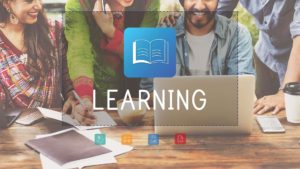As the name shows, Microlearning is a persuasive teaching strategy designed to meet the demands of time-short of students by giving them directed, bite-sized information that easily integrates into their everyday routines. This learning system improves information presentation, remembering, and engagement by disintegrating difficult subjects into consumable pieces.
This system and format are incredibly helpful for the modern fast-paced society, where everyone is in a rush to things. Traditional learning methods often fail to fulfill the needs of busy people because a lot of them have issues with time management.
Furthermore, Learning in sections has become an essential approach to education and training.
Microlearning distributes instructional material in brief, targeted bursts. These brief learning modules are easy for learners to absorb and interact with because they are made to address particular learning objectives. This prioritizes conciseness and clarity above overloading people with information.
Key Takeaways of Microlearning

Flexibility and Accessibility: This system is a great option for those with hectic schedules since it enables students to interact with instructional materials at any time and from any location.
Diverse forms: A range of delivery forms, including podcasts, infographics, videos, and quizzes, accommodate various learning preferences and styles, guaranteeing a more individualized educational experience.
Future Prospects: Microlearning will have more chances as long as technology keeps improving. Artificial intelligence, gamification, social learning, and mobile accessibility are some of the trends that could improve the efficacy and reach of this system.
Nonetheless, this learning stances as a useful tool in the pursuit of effective and efficient education in a time when time is limited and information is plentiful.
Essential Elements of Microlearning

Short Duration: Because each module usually lasts only a few seconds to ten minutes or less, learners can participate right away without having to commit a lot of time.
Targeted Content: Because this learning concentrates on particular subjects or abilities, students can focus intently on one area at a time without interruption.
Accessible Format: To accommodate different learning styles, content can be presented in a variety of formats, including podcasts, infographics, videos, quizzes, and more.
The impact of the digital age on Microlearning

Large volumes of information are now easily accessible because of the internet. Therefore, instead of participating in long, generalist training programs, learners frequently prefer to look for specific knowledge.
There is a Target Audience for this learning format. A wide variety of learners are served including:
Professionals
Professionals with hectic schedules frequently have little time for education and training. Without interfering with their work schedule, Microlearning gives them the freedom to pick up new knowledge or abilities related to their position.
Students
Students who have hard academic schedules and extracurricular activities can benefit from Microlearning since it enables them to add brief, targeted content to their studies that support what they learn in class.
Lifelong Learners
Without committing to lengthy classes, people who value their professional and personal development can use this incredible learning system to explore hobbies, gain new skills, and remain up to date with industry trends.
The Benefits of Microlearning
Microlearning has gained significance in the world of education and training due to its unique features that cater precisely to the demands of busy learners. Here is how this improves the educational process and encourages efficient knowledge acquisition.
- Efficiency of Time
The time efficiency of this learning is one of its biggest benefits. Long stretches of concentration and involvement are frequently needed for traditional learning approaches, which can be difficult for people with hectic schedules. Since this system modules usually take five to ten minutes, students can interact with the material efficiently.
Convenience for Busy Schedules: Shorter learning sessions make it simple for students to incorporate educational activities into their everyday schedules, whether they are scheduled during meetings, lunch breaks, or travels.
Reduced Procrastination: learners are more inclined to start and finish modules when they can easily access bite-sized content, which lessens the inclination to put off education.
- Enhanced Involvement
When compared to traditional educational forms, this learning encourages higher levels of engagement among students.
Engaging Content: This learning keeps learners interested and avoids the tiredness that comes with extended sessions by presenting material in little, targeted chunks.
Variety of Formats: To accommodate diverse learning styles and make the experience more dynamic and captivating, Microlearning frequently uses a range of multimedia formats, including videos, infographics, and interactive tests.
- Fast Rewards
Students get a sense of satisfaction after finishing brief modules, which encourages them to pursue further studies.
Improved Remembering: Microlearning’s architecture encourages improved information retention. According to research, people are more likely to retain knowledge when it is delivered to them in digestible chunks as opposed to being overloaded with it.
Cognitive Load Management: By lowering cognitive overload, this learning enables students to concentrate on a single idea at a time, which improves comprehension and memory.
- Repetition and Strengthening
A lot of Microlearning programs use strategies like quizzes, and summary exercises to assist students retain information in their long-term memory.
Adaptability: Unmatched flexibility is offered by Microlearning, which enables users to access content on PCs, tablets, cellphones, and other devices at any time and from any location.
On-Demand Learning: These learning materials are accessible whenever and wherever learners choose, allowing them to study at their own pace.
- Personalized Learning Paths
With so much content at their clearance, students can customize their education to concentrate on particular subjects or abilities that suit their requirements and interests.
Instant Use: Practical exercises and real-world applications are common components of Microlearning, allowing students to put their knowledge to use right away.
Hands-On Learning: By including interactive elements, such as simulations or case studies, learners can practice new abilities right away, reinforcing their learning and increasing confidence.
How to Create Successful Microlearning Environments?
Creating outstanding learning experiences is essential to increasing student engagement and guaranteeing that they meet their learning objectives. With an emphasis on meeting the requirements of varied learners and efficiently delivering information, here is a comprehensive overview of key concepts and tactics to take into account when developing Microlearning content.
- Determine the Learning Goals
A thorough comprehension of the learning objectives is the cornerstone of each successful Microlearning program.
Establish Clear Objectives: Specify clear, quantifiable goals that students should accomplish by the end of the course. For instance, “Explain the four Ps of marketing: product, price, place, and promotion” would be a more precise goal than a more general one like “understand marketing concepts.”
- Chunking Content
To improve understanding and retention, content chunking is the technique of dividing complicated information into smaller, easier-to-manage pieces.
Focus on Key Concepts: Determine and highlight the fundamental ideas or abilities that students must understand. This method enables deeper engagement with each topic and helps avoid cognitive overload.
Logical Sequencing: Arrange information logically, beginning with fundamental ideas and working your way up to more complicated subjects. Participants are guaranteed a smooth learning curve as a result.
- Interesting Formats
Use a range of captivating formats that accommodate various learning styles to grab students’ attention and hold it.
Multimedia Components: To produce an engaging Microlearning educational experience, use podcasts, infographics, videos, animations, and interactive tests. A brief animated film that explains a concept, for instance, maybe more interesting than a solely text-based lecture.
- Interactivity
To encourage active engagement and critical thinking, incorporate interactive components like case studies, scenario-based questions, and drag-and-drop exercises.
Visual and Thematic Coherence: Make sure that every Microlearning module uses the same color scheme, font, and visual aesthetic. Besides enhancing brand identity, this makes it easier for students to explore the material.
Voice and Tone: Certify the Micro learning content has a consistent voice and tone that appeals to the target audience and is in line with the brand’s values.
- Mechanisms of Feedback
Feedback methods are essential for evaluating student comprehension and encouraging continuous development.
Polls and Quizzes: To measure understanding, incorporate polls, interactive tests, or quizzes into the learning modules. Giving students immediate feedback helps them pinpoint their areas of weakness and reinforces important ideas.
- Possibilities for Reflection
Using open-ended questions or prompts encourages students to consider what they have learned to promote greater involvement and self-evaluation.
What are the best Methods and Structures of Microlearning?
Teachers and trainers can accommodate different learning types and improve the overall learning experience by using Microlearning, which can be provided in several formats.
- Brief, Interesting Video Clips:
Description: Usually lasting between 30 and 5 minutes, Microlearning films concentrate on a single topic, ability, or idea.
Benefits: Videos may simplify difficult subjects by using visual storytelling to exemplify them. Combining visual and aural components can improve memory recall.
Top Use Cases: Perfect for describing procedures, showcasing abilities (such as in software tutorials), or giving brief synopses of ideas (such as summaries of theories or models).
- Infographics
Infographics are graphical visual representations of facts, information, or knowledge that are intended to convey complicated concepts understandably and concisely.
Benefits: Infographics as learning styles make information easier to understand and retain by simplifying it. Additionally, they can successfully convey comparisons or figures and appeal to visual learners.
Top Use Cases: helpful for providing step-by-step instructions in an aesthetically pleasing manner, summarizing research findings, or displaying workflows.
- Audio Content for Learning on the Go: Podcasts
Podcasts are a flexible choice for students with hectic schedules because they are audio recordings that may be listened to whenever you want.
Benefits: They enable students to learn while multitasking, including during workouts or travels. A conversational approach can enhance the informality and interest of learning styles.
What future hold for Microlearning?

Technology breakthroughs and shifting student demands are driving a constant evolution in the Microlearning field. Looking ahead, several trends are developing that could completely change the way Microlearning is presented and experienced.
- Customized learning experiences using artificial intelligence (AI)
Adaptive learning algorithms: AI systems can develop customized learning paths by analyzing the preferences and actions of individual learners. AI can suggest tailored modules that meet learners’ needs by monitoring progress and identifying areas in which they struggle.
Increased Engagement: Since personalized material speaks more to each learner’s interests and learning preferences, it can greatly increase learner engagement. AI can also help students stay on course by offering prompt interventions and support.
- Gamification by Including Game Components
Engagement and Motivation: Gamification is the process of incorporating aspects of game design, like challenges, leaderboards, badges, and points, into Microlearning modules. This method motivates students to interact more fully with the material by nurturing a sense of accomplishment and competition.
Fun Learning Experience: Gamification can lower resistance to using educational materials and encourage long-term interest by making learning fun.
- Collaborative Learning Encouraged by Social learning styles
Discussion Forums: Social learning promotes communication between students via chat rooms, discussion boards, and social media sites. Through a variety of viewpoints, this collaboration can result in greater understanding and improve knowledge sharing.
Peer-to-Peer Interactions: Promoting group projects or peer evaluations among students helps them feel supported and part of a community, which enhances and collaborates the learning process.
- Improving Accessibility through Mobile Learning:
Mobile-Friendly Platforms: The need for mobile-friendly Micro learning platforms is growing as mobile technology becomes more widely used. It is simpler for students to integrate studying into their hectic schedules because they can access instructional materials at any time and from any location.
Location-Based Learning Styles: Mobile learning can also make use of location-based technologies to offer context-specific learning opportunities, such as on-the-spot instruction while participating in a field exercise or instant access to materials for a particular task.













